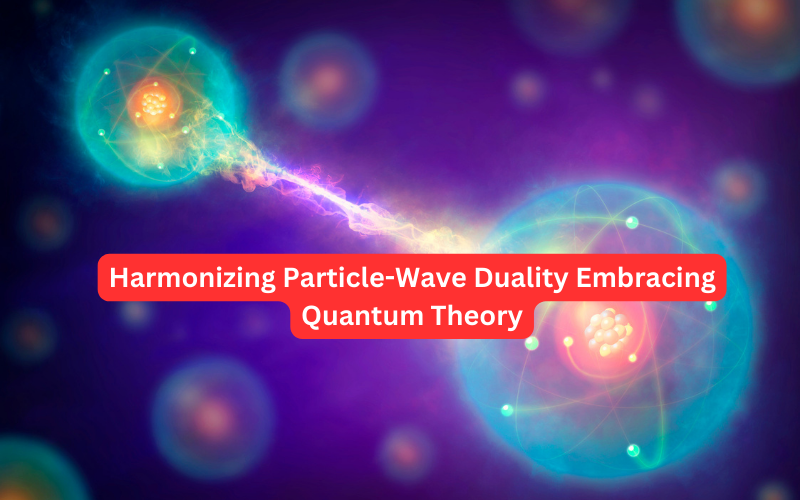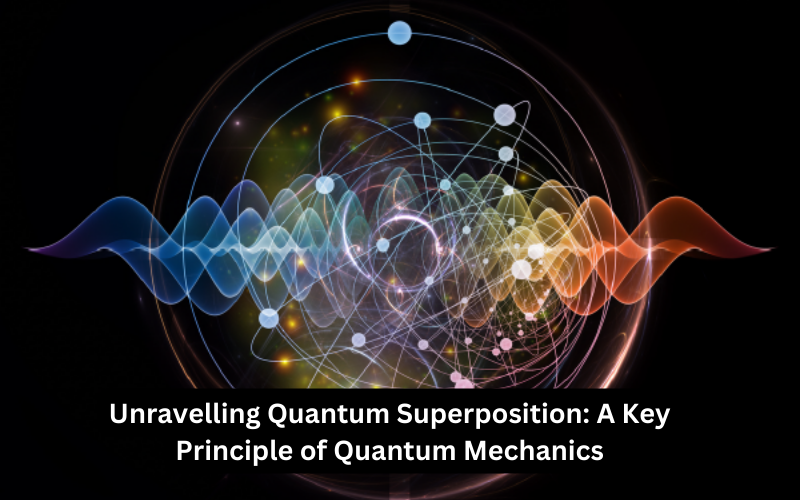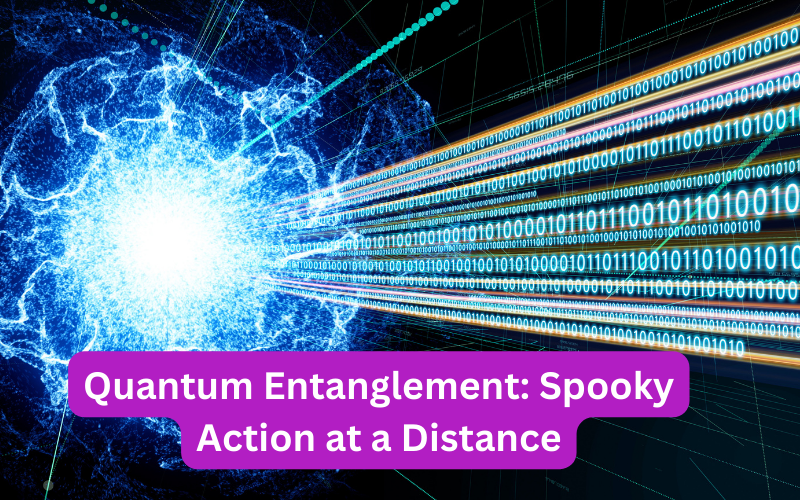
Harmonizing Particle-Wave Duality Embracing Quantum Theory
Delves into the captivating realm of quantum physics where particles and waves coexist in a delicate balance.
The idea of duality shakes up our usual understanding of reality and shows us that there’s a fascinating relationship between separate particles and wavy patterns. It’s like these two aspects dance together in a beautiful and synchronized way.
By embracing the idea of duality, we open ourselves to exploring the deep essence of the quantum realm, enabling us to gain a more profound comprehension of its fundamental nature. This approach brings us closer to unravelling the captivating and mysterious aspects that make the quantum realm so fascinating and perplexing.
Understanding Quantum Theory
Quantum theory, also known as quantum mechanics, is a captivating field of physics that delves into the fascinating behavior of matter and energy at unimaginably small scales. It takes us on an enthralling journey into the realm where the tiniest building blocks of our universe reside.
It provides us with a framework to understand the way particles, such as electrons and photons, exhibit a probabilistic behavior rather than the predictable nature observed in classical physics.
Read More: Is Biotechnology Laboratory Analytical Instruments a Good Career Path?
Particle And A Wave In Quantum Theory
Delves into the fascinating duality of particles and waves within quantum physics.
It delves into the exploration of how particles such as electrons and photons can showcase characteristics of both particles and waves, which challenges our traditional understanding of physics based on classical principles.
The concept of wave-particle duality plays a crucial role in understanding phenomena such as interference and diffraction, offering insights into the enigmatic nature of the quantum realm.
Unravelling Quantum Superposition: A Key Principle of Quantum Mechanics

Quantum superposition is a core concept in quantum mechanics, describing the ability of a quantum system to exist in multiple states simultaneously.
It reveals the fascinating idea that particles or systems can be in multiple conditions or configurations at the same time.
This phenomenon defies classical intuition and enables particles to occupy multiple states until measured. Quantum technologies like quantum computing and cryptography harness superposition’s power.
By understanding superposition, scientists unlock new technological possibilities and deepen their understanding of the universe.
Quantum Measurement: Probing The Foundations And Limits Of Reality
Quantum measurement lies at the heart of understanding the quantum realm. It unveils the mysterious behaviour of particles, revealing their properties and states.
By interacting with quantum systems, measurement collapses the wavefunction, providing valuable information. However, it also introduces uncertainty and challenges our traditional notions of reality.
Exploring quantum measurement is crucial for unravelling the profound principles governing the quantum world.
Wave-Particle Duality: The Basics
Wave-particle duality stands as a fundamental principle within quantum theory, expressing the idea that particles have the capability to display characteristics of both waves and particles.
This suggests that entities such as electrons or photons possess the remarkable capacity to exhibit traits of both waves and particles concurrently.
At the quantum level, these entities are described by a mathematical function called the wavefunction. The wave function encompasses their probabilistic behavior, providing a framework to understand and predict their properties.
Historical Milestones In Discovering Duality
The concept of wave-particle duality emerged from the groundbreaking research carried out by several renowned physicists in the early 20th century.
Albert Einstein was one of the key figures who made significant contributions to the development of the concept of wave-particle duality.
He introduced the notion of light quanta or photons, demonstrating their dual nature as both particles and electromagnetic waves.
Louis de Broglie’s groundbreaking hypothesis followed, stating that particles, including electrons, possess wave-like properties. This further expanded our understanding of the duality between particles and waves in the quntum realm.
Ports Stadium: The Unforgettable Hub Of Sporting Excellence
Ports Stadium stands as an unrivalled symbol of sporting greatness. Its hallowed grounds have witnessed unforgettable moments etched in the annals of sports history.
This iconic venue encapsulates the pinnacle of athletic achievement, attracting fans from all walks of life. Whether it’s the thunderous cheers or the awe-inspiring performances, Ports Stadium is an unparalleled hub of sporting excellence.
Schrodinger Equation: The Mathematical Framework
Erwin Schrodinger’s wave equation, developed in 1926, offered a powerful mathematical representation of wave-particle duality.
The equation developed by Erwin Schrödinger explains how the wavefunction of a particle changes with time and influences the probability distribution of various measurable properties.
Experimental Evidence for Dual Nature
Experimental observations have consistently supported the existence of wave-particle duality.
Well-known experiments like the double-slit experiment have showcased fascinating results. They have demonstrated the formation of interference patterns when particles pass through two closely spaced slits.
Providing compelling evidence of their wave-like characteristics’ the photoelectric effect, for which Einstein received the Nobel Prize.
Provided evidence for the particle-like nature of light. It demonstrated that light behaves as individual particles, called photons, when interacting with specific materials.
Interference And Superposition: Unveiling Wave-like Behavior
One of the key phenomena associated with wave-particle duality is interference. When waves interact, they can reinforce or cancel each other out, creating patterns of light and dark regions.
In the context of particles, interference arises from the superposition of their wavefunctions, allowing for the formation of interference patterns that manifest as observable phenomena.
Observing Particle-Like Behavior
While particles can display wave-like behavior, they also possess properties that are typical of particles. When a measurement is conducted on a particle, its wave function undergoes a “collapse” into a specific state.
Corresponding to a definite position or momentum. This collapse occurs randomly, in accordance with the probabilistic nature of quantum mechanics.
Applications Of Wave-Particle Duality
Wave-particle duality has wide-ranging implications across various scientific disciplines. In the field of medicine, electron microscopy utilizes the wave-like nature of electrons to achieve high-resolution imaging, enabling researchers to explore the intricate details of biological structures.
In the realm of telecommunications, the dual nature of photons as both particles and waves is effectively utilised for transmitting information via fiber-optic cables. By utilizing photons, data can be transmitted efficiently and swiftly over long distances.
Quantum Mechanics And The Uncertainty Principle
Wave-particle duality is intricately connected to the Heisenberg uncertainty principle, which states that certain pairs of properties, such as position and momentum, cannot be precisely determined simultaneously
This fundamental limitation arises due to the probabilistic nature of quantum measurements and sets a boundary on the level of precision with which we can determine a particle’s properties.
The Wavefunction: Probability and Measurement
The wavefunction is a vital concept in quantum mechanics, as it portrays the probability distribution of a particle’s properties. It allows us to comprehend the likelihood of different characteristics when studying quantum particles.
When a measurement is conducted, the wave function of a particle undergoes a process called “collapse,” resulting in a specific state and providing a definite value for the measured property. The likelihood of obtaining various outcomes is determined by the squared amplitude of the wavefunction.
Quantum Entanglement: Spooky Action at a Distance

Quantum entanglement is a fascinating phenomenon where two or more particles become intricately linked, so that the state of one particle instantly affects the state of another, regardless of the distance between them. It showcases a remarkable connection that transcends physical separation.
This counterintuitive effect has been extensively researched and is the basis for various quntum technologies.
Quantum Computing: Harnessing Dual Nature
The concept of wave-particle duality plays a vital role in the fascinating realm of quantum computing. Quantum bits, also known as qubits, harness the power of quantum superposition and entanglement to perform computations in ways that classical computers cannot accomplish.
Leveraging the dual nature of particles holds the potential to bring about revolutionary advancements in computing, cryptography, and optimization algorithms.
Quantum Theory and Everyday Life
Although the strange and abstract concepts of quantum theory may seem far removed from our everyday experiences, they underpin many aspects of modern life.
From the technology in our smartphones to the functionality of GPS systems, quantum theory has enabled remarkable advancements that have become integral to our society.
Frequently Asked Questions
Q: How does wave-particle duality affect our understanding of the universe?
A: Wave-particle duality provides a deeper understanding of the fundamental nature of matter and energy, challenging classical physics and expanding our knowledge of the universe.
Q: Are there any practical applications of wave-particle duality?
A: Yes, wave-particle duality has practical applications in fields such as medicine, telecommunications, and quantum computing.
Q: Can wave-particle duality be observed in everyday life?
A: While wave-particle duality may not be directly observable in our daily experiences, it underpins many technological advancements that have become an integral part of modern life.
Q: What are the challenges in understanding wave-particle duality?
A: Challenges include developing a comprehensive theory of quantum gravity, reconciling quantum mechanics with general relativity, and exploring the boundaries of quantum phenomena.
Q: How might quantum computing revolutionise the field of technology?
A: Quantum computing harnesses wave-particle duality to perform complex computations at an unprecedented scale, offering the potential for breakthroughs in cryptography, optimization, and simulations.
Conclusion
In the realm of quantum theory, the duality of particles as both waves and particles remains a captivating enigma.
Through historical milestones, experimental evidence, and theoretical frameworks, scientists continue to unlock the secrets of this duality.
Wave-particle duality challenges our classical intuition and expands our understanding of the fundamental nature of reality.


